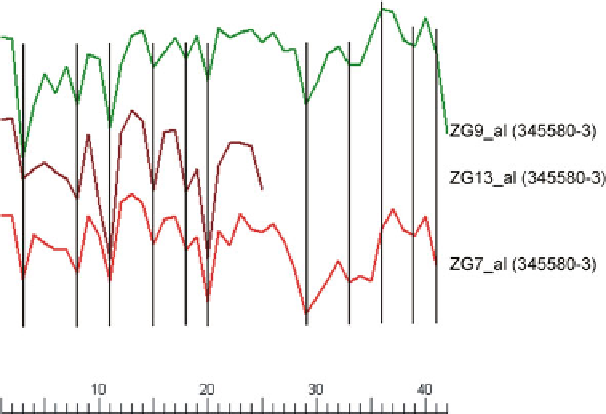Geoscience Reference
In-Depth Information
Fig. 11.5
Dendrogram of trunk samples (
vertical lines
: annual growth rings)
calendar years, this corresponds to a time span between 9,020 and 8,600 BP with
95.4% probability.
The pollen analyses of gyttja and peat sediments allow to distinguish five local
Alnus
(core 345580-11) or
Pinus
(core 345600),
Ulmus-Salix
,
Pinus-Quercus
and
Alnus-Ulmus
LPAZ.
These two diagrams show that the development of vegetation at the two sites was
generally similar, which means that the deposition of the investigated sediments
took place at the same time. The presence of oak (
Quercus
), elm (
Ulmus
) and lime
(
Tilia
) in the forest composition proves the existence of demanding, broad deciduous
forest, typical for the Atlantic period. This type of forest association needs habitats
with good thermal and moisture conditions, as well as the presence of non-leached
soils. The existence of the warm climate is confirmed by the occurrence of pollen
ence between these two investigated sites is connected with the dominance of alder
the existence of different hydrological conditions of local habitats. The associa-
tion with alder (
Alnus
) did occupy wet, frequently flooded habitats rich in nutrients,
while pine (
Pinus
) forest grows mainly on the dry, sandy areas.
According to pollen analyses, the gyttja and peat were deposited during the early
Atlantic period. The palynological records are therefore in good agreement with the
radiocarbon ages of tree trunks from this site.
The diatomological analyses show a deficiency of microflora in most of the sam-
ples. In two intervals (21 and 25 cm) of core 345600, the presence of only single

